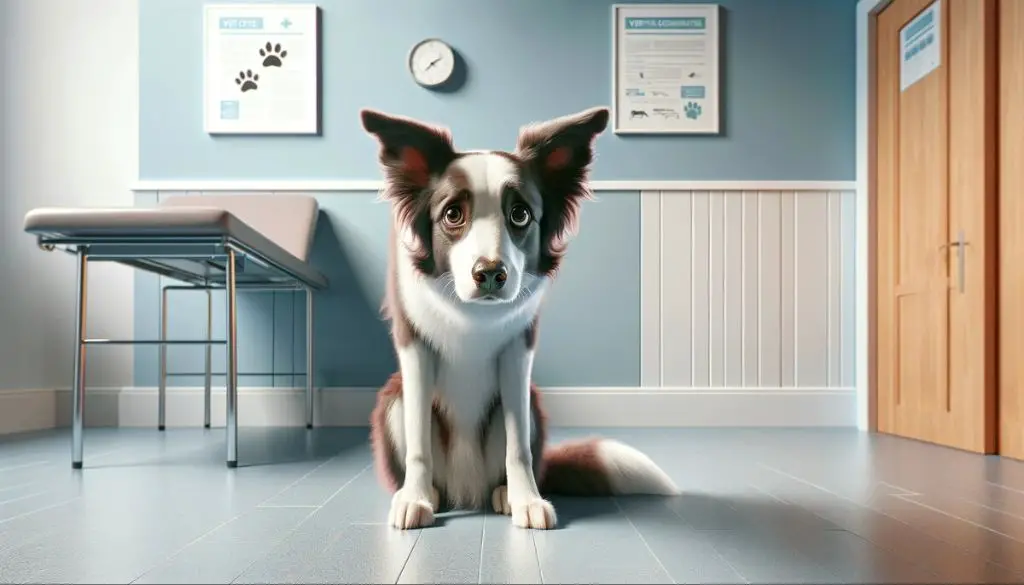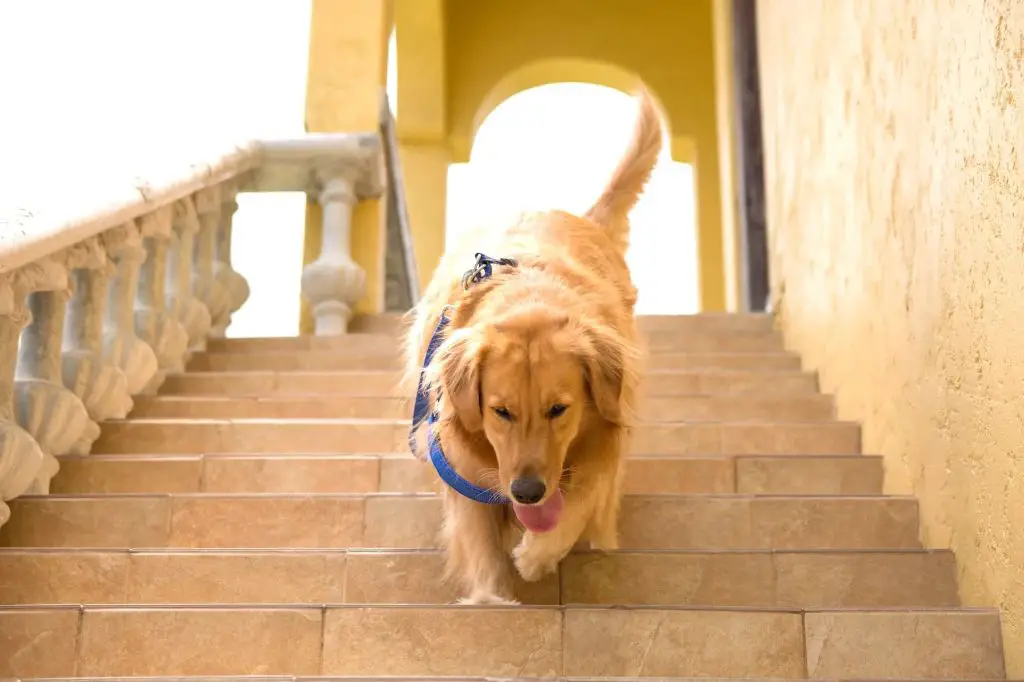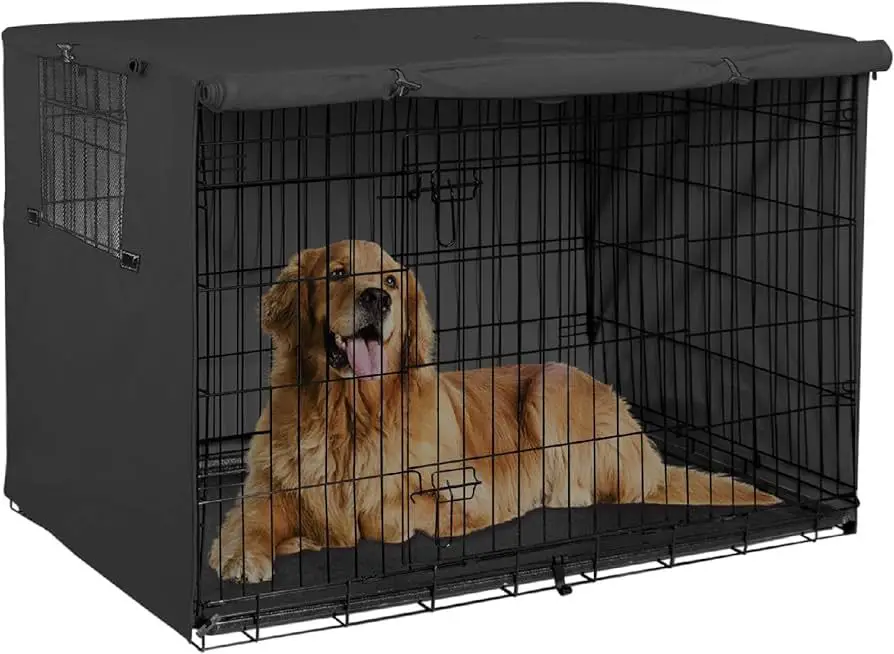What is a Kennel?
A kennel is a structure or shelter for dogs (Kennel Definition & Meaning). The main purpose of a kennel is to provide dogs with a safe, enclosed space for containment, housing, and shelter.
There are several types of kennels:
- Indoor kennels are enclosed cages or crates inside a home used for containing dogs.
- Outdoor kennels are outdoor structures made of materials like chain link, wood, or concrete used for housing dogs outside.
- Commercial boarding kennels are facilities that board dogs temporarily while the owner is away.
- Breeding kennels are facilities for professional dog breeding and raising puppies.
- Show kennels house show dogs trained for dog shows and competitions.
- Working kennels provide housing for dogs with jobs such as police, military, sled racing, or hunting.

While kennel types vary, the main purpose remains providing safe, secure housing and shelter for dogs.
Kennel vs Doghouse
A kennel and a doghouse serve similar purposes of providing shelter for dogs, but there are some key differences between the two.
A doghouse is typically a small, enclosed shelter made of wood, plastic or insulated material that provides a dog with shade and protection from the elements https://www.dakotastorage.com/blog/indoor-dog-crate-vs.-outdoor-dog-kennel-when-to-use-each. Doghouses are designed for short-term use and for one or two dogs at most. They are placed outside a home and give a dog their own personal space for napping or getting away.
A kennel is larger than a doghouse and meant to safely contain one or more dogs for longer periods of time when the owner is away https://hinative.com/questions/339357. Kennels provide shelter as well as space for dogs to move around. They are often used by breeders, training facilities, shelters, boarding facilities and pet owners who need to contain their dogs outside for certain periods of time.
The main considerations when choosing between a doghouse and kennel are the duration the dog will need to use it, the number of dogs, and the amount of space needed. For short-term use by one or two dogs that just need some shade and shelter outside, a doghouse is likely sufficient. For safely containing multiple dogs or longer-term stays, a more spacious kennel is likely the better option.
Types of Kennels
There are three main types of kennels for dogs: indoor kennels, outdoor kennels, and portable kennels. Each type serves a different purpose and has its own advantages and disadvantages.
Indoor Kennels
Indoor kennels (https://www.petcratesdirect.com/blogs/news/a-guide-to-the-different-types-of-dog-kennels) are designed for keeping dogs confined and secure inside the home. They come in materials like plastic, metal, and soft fabric. Indoor kennels are typically smaller and offer less space than outdoor options. They can be used for house training, containment while you are away, travel, and recovery from illness/injury.
Outdoor Kennels
Outdoor kennels (https://www.alphapaws.com/different-types-of-dog-kennels/) are large enclosures placed outside, often in the yard. They provide ample space for exercise and bathroom breaks. Outdoor kennels are constructed from materials like chain link, wood, or metal. They offer ventilation and shelter from the elements while allowing your dog to enjoy fresh air. However, supervision is still required.

Portable Kennels
Portable kennels (https://www.thedogkennelcollection.com/blog/heavy-duty-dog-kennels/) are travel carriers that can be moved from place to place. They are usually made of plastic or fabric lined with mesh for airflow. Portable kennels fold down for easy transport by car or plane. They provide containment and security for dogs on-the-go. Sizes range from small carriers to large travel crates.
Kennel Materials
When selecting materials for a dog kennel, there are several options to consider with various pros and cons:
Powder-coated steel is a popular choice because it is durable, easy to clean, chew-resistant, and weather-resistant. However, it can be noisy when dogs jump on it and may retain odors over time. Powder coating prevents rusting (source).
Galvanized steel is another durable, rust-resistant option that is slightly less expensive than powder-coated steel. However, it can also be noisy and retains odors (source).
Stainless steel is extremely durable, easy to sanitize, resistant to odors, rust, and chewing. But it is one of the more expensive kennel materials (source).
Aluminum is lightweight, durable, and rust-resistant. However, thicker gauges are needed to prevent bending and chewing. It can also be noisy when dogs jump on it (source).
Plastic kennels are inexpensive but not as sanitary, durable, or chew-proof as metal kennels. They retain odors and can crack over time, but dampen noise. They often need replacing sooner than other materials (source).
Kennel Sizes
When selecting a kennel for your dog, it’s important to choose one that is appropriately sized. The general rule is to get a kennel that is just large enough for your dog to stand up, turn around, and lie down comfortably – but not so large that they can use one end as a bathroom. Kennel size recommendations often depend on your dog’s breed, weight, and age.
For small breed dogs under 25 pounds, a 24″L x 18″W x 19″H kennel is usually ideal. Medium breeds between 25-50 pounds do best in 30″L x 19″W x 21″H kennels. For large breeds between 50-90 pounds, choose a kennel that is 42″L x 28″W x 31″H. Giant breeds over 90 pounds need extra-large kennels that are at least 48″L x 30″W x 33″H (Source).
The length of the kennel is most important, as this allows enough room for your dog to lie down. Width and height should be adjusted based on your dog’s size and build. Make sure to measure your dog while they are in a standing position to get accurate sizing. Consider getting a kennel that allows for some growth if purchasing for a young puppy.
Other factors like your dog’s activity level can also impact ideal kennel size. More active dogs often appreciate some extra space to move around. Senior dogs may need a larger kennel to accommodate joint stiffness or mobility issues. Always ensure your dog has adequate room, and upgrade kennel size as needed if they appear cramped.
Kennel Features
Kennels come with a variety of features that are important for dogs’ health, safety and comfort. Some key features to look for in a quality kennel include:
Ventilation – Proper airflow and ventilation keeps the kennel cool in summer and reduces odors. Kennels should have openings on at least two sides to allow cross-ventilation [1]. Many also include a fan or air conditioning system.
Easy cleaning – Kennel floors should be made of materials like coated wire mesh that allow waste to fall through, with a pull-out tray underneath. Concrete flooring is easier to disinfect than wood or dirt [2]. The kennel should also include a drain for easy wash downs.

Comfort – Kennels should include a thick, durable bed or pad to allow dogs to rest comfortably off the ground. insulation helps regulate temperature. Easy access to food and water is also important.
Safety locks – Secure latching doors keep dogs safely contained. Dig guards, shade covers, and reinforced fencing prevent escapes or injuries.
Durability – Thick gauge steel wire, galvanized coatings, and weather-resistant materials allow kennels to withstand years of outdoor use.
Size – Kennels should be large enough for dogs to stand, turn around, and lie down comfortably.
By selecting a kennel optimized for ventilation, easy cleaning, comfort and safety, you can help create a healthy and secure environment for dogs.
[1] https://www.thedogkennelcollection.com/blog/commercial-dog-kennels-6-essential-features
[2] https://www.thedogkennelcollection.com/blog/best-dog-kennel-features
Kennel Maintenance
Proper kennel maintenance is crucial for keeping your dog healthy, safe, and comfortable in their enclosed space. Regular cleaning and disinfecting is key.
According to Dog Kennel Maintenance Tips | Best Ways to Maintain …, you should check around doors and windows for cracked caulk or seal strips and replace as necessary. Remove all bedding and thoroughly wash, rinse, and disinfect on a weekly basis.
It’s also important to ensure your dog’s comfort and safety. According to The Importance of Regular Maintenance in Dog Kennels, check for hazards like sharp edges or hardware your dog could get caught on. Replace any worn out bedding and make sure proper temperature control and ventilation is maintained.
Kennel Training

Crate training is an effective way to help dogs adjust to spending time in a kennel or confined space. It utilizes positive reinforcement to create a safe space that dogs enjoy being in. According to the Humane Society, crate training can take days or weeks depending on the dog’s age, temperament, and past experiences.
Some tips for successful crate training include: starting with short sessions of 5-10 minutes in the crate and slowly increasing the time, providing treats and praise for calm behavior in the crate, feeding meals in the crate, and ensuring the crate is comfortable with bedding and chew toys. Never use the crate for punishment. Creating positive associations sets dogs up for kennel success.
With patience and consistency, dogs can learn to see their kennel as a den-like safe haven. A properly crate trained dog will be calmer and better adjusted to spending time in their kennel, whether at home during the day or at a boarding kennel for travel. According to the AKC, a crate trained dog is likely to have less separation anxiety and fewer destructive behaviors. Kennel training leads to increased happiness and safety for dogs.
Kennels for Special Needs
Some dogs require special accommodations in their kennels due to age, anxiety, or medical conditions. Kennels tailored for senior dogs often have ramps, heated beds, and orthopedic mats to support aging joints. According to Fusion Pet Retreat, kennels may provide “highly specialized care” for senior dogs including boarding combined with rehab services. For anxious dogs, covered kennels and calming supplements can reduce stress. Sitting Pretty Dog Resort offers therapeutic boarding to help anxious pups feel secure. Their kennels utilize “calm” colors and diffusers. Owners can also bring blankets with familiar scents from home.
Medical conditions like incontinence or mobility issues may necessitate customized kennels. For incontinent dogs, kennels have washable mats and bedding to absorb accidents. For mobility impaired dogs, kennels have ramps, extra padding, and assistance with movement. According to Petra’s Dog Resource Center, special needs kennels provide highly specialized veterinary care alongside boarding. With individual attention, these kennels keep senior and special needs dogs happy and safe.
Kennel Costs
The average cost to board a dog overnight at a kennel is around $25-$45 per night according to sources like Daily Paws and HomeGuide. For longer stays, most kennels charge a weekly rate around $150-$250 or a monthly rate around $500-$800.
Several factors affect kennel boarding costs including the kennel’s location, amenities offered, your dog’s size, and peak seasons. Urban kennels or those with more amenities like walks, playtimes, or webcam access charge higher rates. Larger dogs generally have higher fees as they require more space and resources. Holiday seasons like summer and Christmas when demand is high also boost rates.
To save on kennel costs, look for more affordable options like nonprofit boarding or consider a pet sitter for in-home care. Take advantage of discounts for longer stays or first-time customers. Avoid peak seasons if possible. Ultimately finding a safe, loving kennel for your dog is more important than just the lowest price.